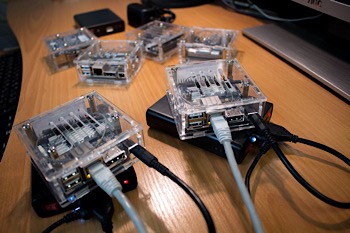GOVERNMENT
MU, Russian scientists have increased the Internet speed up to one and a half times

The algorithm proposed by the scientists will make it possible to participate in the experiments on the hadron collider level
A joint article of the scientists of the Samara University and the University of Missouri (Columbia, USA) was published in the IEEE Transactions on Network and Service Management journal. The publication presents an algorithm that provides a fast and reliable access to powerful data processing centers (Big Data) for solving high-tech tasks. {module In-article}
The algorithm described in the scientific article is based on a special routing method developed by the team of scientists of the Samara University and the University of Missouri. It provides quick access to the most powerful large data processing centers (Big Data technologies) in the world. This is relevant for solving problems that require high-precision calculations both in the field of fundamental science and for the implementation of applied projects.
"We offer the mechanism that can be in demand by the scientists who conduct experiments on the basis of the Large Hadron Collider at Cerne, - one of the authors of the article, Professor of the Department of Supercomputers and General Informatics of Samara University, Andrey Sukhov, provides an example. - They calculate tasks in the laboratories scattered all over the world, make inquiries to the computer centers of the Cern. They also need to exchange both textual information and high-resolution streaming video on-line. The technology that we offer will help them with this". Moreover, according to the scientist, the presented algorithm can be in demand by the specialists involved in the project of the International Thermonuclear Experimental Reactor which is being constructed at the CEA research center in France.
The authors of the article offer the following scenario for implementation. The user puts forward 4 basic requirements - a certain bandwidth of the signal, the speed of data transmission in Kbps, cloud storage and the price of the service. The algorithm, developed by the scientists, gives the client a lot of solutions to the specified criteria, while offering the best options. The scientists say, that no matter what connection is used - fiber optic networks or wi-fi.
The quality and speed of data transmission is achieved due to the superior constrained shortest path finder algorithm made by the scientists. Thus, the data transmission speed can be increased up to 50%.
The developers called this algorithm "The Neighborhoods Method", and have already tested it earlier in another work, within the framework of which they presented the method of organization of uninterrupted mobile communication on the basis of self-organizing networks.
"In the article published in the IEEE Transactions on Network and Service Management journal, we actually presented an extended version of the constrained shortest path finder tailored to the network virtualization area", - Andrey Sukhov added.
With the emergence of the algorithm, the international projects implemented by Samara University can be developed. Among them there is the creation of an experimental installation for the study of combustion reactions, which is being built within a megagrant under the guidance of Professor of the International University of Florida Alexander Mebel. There are only three such installations in the world and all of them are abroad. The proposed algorithm will allow the leading scientists from all over the world to connect to the theoretical calculations of the mechanisms of combustion reactions.
Moreover the users can benefit from this method to gain remote access to the most powerful supercomputer in the region "Sergey Korolev" for high-precision calculations.
According to the scientists in order to use this algorithm, it is enough to get acquainted with the publication, where the theoretical justification is laid out, and write a practical component for a specific task.
